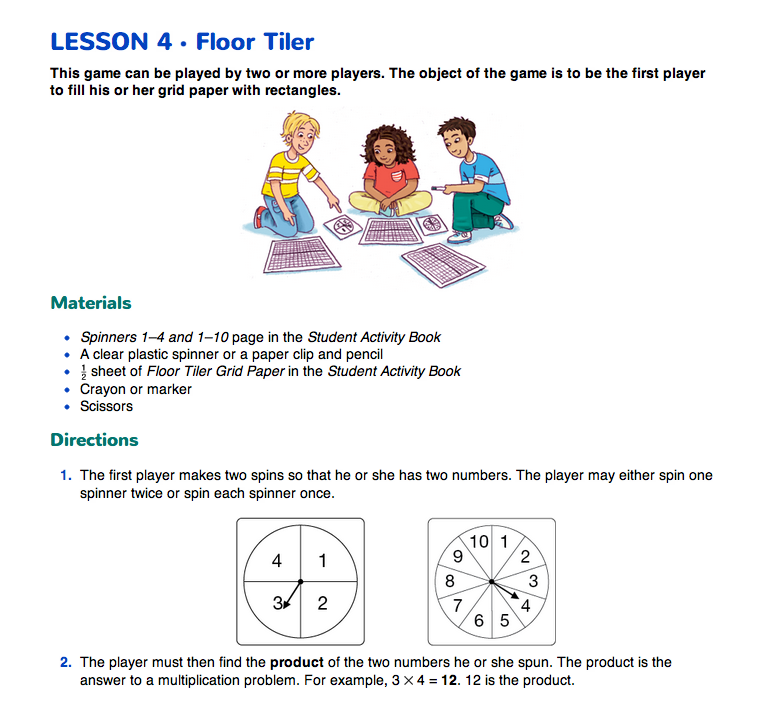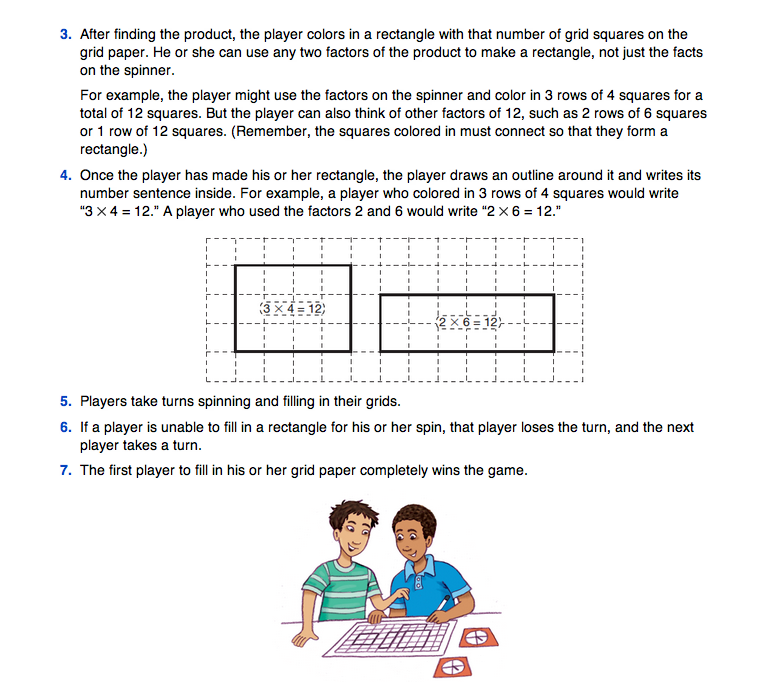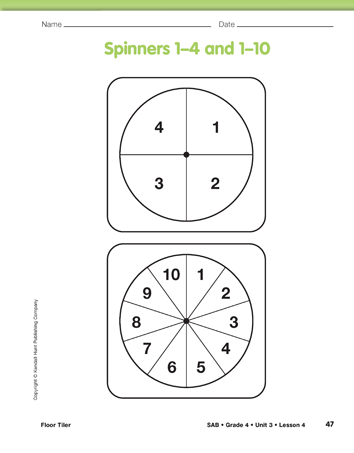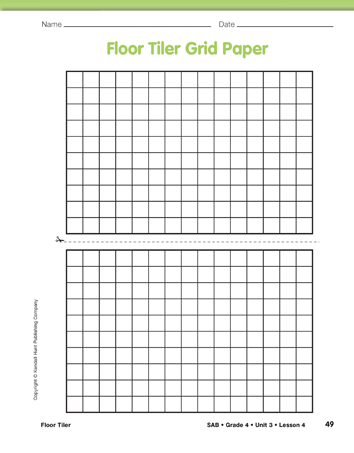Floor Tiler
Est. Class Sessions: 1Developing the Lesson
Introduce Game Directions. Arrange students into pairs or small groups to play Floor Tiler. Ask students to read through the directions for the game found on the Floor Tiler pages in the Student Guide. Make sure all students understand the following:
- A student spins to find two numbers for a multiplication sentence. He or she may use either two spins from one spinner or one spin from each spinner.
- After finding the product, the player draws and colors in a rectangle with that number of squares, outlines the rectangle, and records its number sentence inside.
- The rectangles must have the same number of squares as the product of the two numbers. However, the dimensions of the rectangles do not have to be the same as the two factors spun. For example, if a player spins 6 and 3, he or she can draw either a 6 × 3, 18 × 1, or 9 × 2 rectangle—whichever fits best.
- Play continues until one player fills in his or her grid completely. If a student is unable to fill in a rectangle given his or her product, the student loses that turn.
Demonstrate the Game. Ask a student volunteer to play the game with you on a display of Floor Tiler Grid Paper from the Student Activity Book as you demonstrate the game. After a spin, ask students to help think of the rectangles that can be made from the numbers spun.
For example, if you spin 2 and 6, ask:
Explain that it does not matter which rectangles students choose at the beginning, but as the game goes on, some rectangles will not be possible because they will not fit.
Make Rules for Ending the Game. Students may find that it becomes difficult to fill in the grid completely when only a few squares are left. Encourage them to create a rule to address this situation. For instance, if no player is able to color in a rectangle in three rounds of spinning, the player with the fewest squares left is the winner. Or, after a designated time and equal number of spins, the player with the most squares colored in is the winner.















